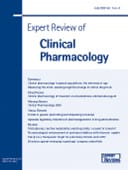
“Phytocannabinoids are produced in Cannabis sativa L. in acidic form and are decarboxylated upon heating, processing, and storage. While the biological effects of decarboxylated cannabinoids such as Δ9 -tetrahydrocannabinol (Δ9 -THC) have been extensively investigated, the bioactivity of Δ9 -THCA is largely unknown, despite its occurrence in different Cannabis preparations. The aim of this study was to determine whether Δ9 -THCA modulates the PPARγ pathway and has neuroprotective activity.
The effects of six phytocannabinoids on PPARγ binding and transcriptional activity were investigated. The effect of Δ9 -THCA on mitochondrial biogenesis and PGC-1α expression was investigated in N2a cells. The neuroprotective effect was analysed in STHdhQ111/Q111 cells expressing a mutated form of the huntingtin protein, and in N2a cells infected with an adenovirus carrying human huntingtin containing 94 polyQ repeats (mHtt-q94). In vivo neuroprotective activity of Δ9 -THCA was investigated in mice intoxicated with the mitochondrial toxin 3-nitropropionic acid (3-NP).
KEY RESULTS:
Cannabinoid acids bind and activate PPARγ with higher potency than their decarboxylated products. Δ9 -THCA increases mitochondrial mass in neuroblastoma N2a cells, and prevents cytotoxicity induced by serum deprivation in STHdhQ111/Q111cells and by mutHtt-q94 in N2a cells. Δ9 -THCA, through a PPARγ-dependent pathway, was neuroprotectant in mice intoxicated with 3-NP, improving motor deficits and preventing striatal degeneration. In addition, Δ9 -THCA attenuated microgliosis, astrogliosis and the upregulation of proinflammatory markers induced by 3-NP.
CONCLUSION AND IMPLICATIONS:
Δ9 -THCA shows potent neuroprotective activity, worth consideration for the treatment of Huntington´s Disease and possibly other neurodegenerative and neuroinflammatory diseases.”
https://www.ncbi.nlm.nih.gov/pubmed/28853159
http://onlinelibrary.wiley.com/doi/10.1111/bph.14019/abstract









